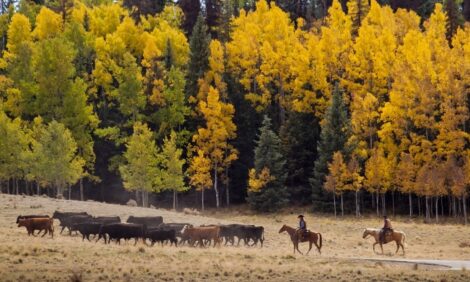



Extra care advised for this year’s first cut silage
Forage experts have warned that weather conditions over recent weeks could bring multiple challenges to silage-making which may need to be addressed this spring.Left unchecked, these could not only seriously reduce silage quality but may also generate gases in silage which endanger human and animal health.
The challenges stem from the unusually hot, dry spell across much of the country through April which saw many farmers spreading high volumes of slurry on to grassland in a short space of time.
Because conditions remained generally dry, little of the nutrition from this slurry will have been taken up immediately by the growing plant.
However, the onset of warm, wet weather over the past few days will have encouraged a sudden uptake of nitrates and a spike in grass growth.
The high nitrate levels which accumulate in the grass have several implications, according to independent silage specialist, Dr David Davies of Silage Solutions.
He says: “Nitrates act as a buffer and will prevent the required drop in silage pH. While this means there will be a poor fermentation, it also leads to a more sinister side-effect which can threaten animal and even human health.
“The poor fermentation results in a slow pH decline and the nitrates in the grass can then be converted to nitrogen dioxide,” he says. “This is a brown gas which can occasionally be seen as a clamp is being filled or may occur shortly after sheeting. It will roll downwards as it’s heavier than air, and persist for a day or more.
“The problem with this gas is that it is converted to nitric acid when it comes into contact with water, which can cause serious, permanent damage when breathed into the lungs.”
This damage, known colloquially as silo gas disease, can be fatal in humans and animals and is the explanation for the rare loss of whole sheds of livestock housed adjacent to silage clamps.
If the gas is seen at or soon after silage making, his advice is to move away from the clamp.
He says: “Remove any livestock from immediately adjoining housing and seek medical assistance if exposure is suspected in anyone working on the farm.”
However, measures can be taken to significantly cut the risk and he advises farmers to send grass samples to be analysed for nitrates and crude protein before they make their silage.
“Crude protein above 18 percent could imply a problem and if nitrate is above 0.25 percent in the freshweight, I would strongly recommend waiting before cutting,” he says.
“However, nitrates between 0.15 percent and 0.25 percent could still be problematic for fermentation,” he continues. “This is not only because they raise the buffering capacity of forage but also because high nitrate is biologically linked with low grass sugar – the substrate needed for fermentation.
“I’d therefore recommend using a high-strength chemical additive, proven to inhibit growth of clostridia and enterobacteria, rather than a bacterial inoculant and just hoping for a good fermentation.
“By killing these harmful bacteria, which are likely to be abundant on swards which had slurry applied that had not ‘washed-in’, you reduce the risk of undesirable fermentation and you will make far better silage,” he says.
Furthermore, silage without either enterobacteria or clostridia will be far more palatable and better for animal health and performance.
Andy Strzelecki, technical director for forage preservation specialists, Kelvin Cave Ltd advises on the use of the silage preservative, Safesil Challenge, in this situation.
He says: “This product has been developed for use on low dry matter forages and contains the correct levels of sodium nitrite to eliminate undesirable bacteria. The additional ingredients, sodium benzoate and potassium sorbate, are also proven to eliminate the activity of yeasts and moulds without compromising silage fermentation.”
Independent nutritionist, Pete Kelly, concurs with the use of a high-strength preservative and explains why nitrates are so harmful to animal health.
He says: “If cattle consume high nitrate silage it can affect their ability to circulate oxygen and lead to under-performance.
“Furthermore, elevated levels of nitrate in the silage when fed can also upset rumen fermentation. This results in high rumen ammonia concentrations making dung very loose, increasing milk urea nitrogen and potentially compromising fertility.
“This can be seriously exacerbated by feeding alongside urea-treated cereals. So, if in doubt this year, consider all aspects of the ration before treating any forage or cereal grains with urea. As a rule of thumb, the total nitrate intake/cow/day should be less than 150g.”
Meanwhile, he says the potentially high levels of clostridia and enterobacteria expected with this year’s first cut silage can have further implications for animal health.
“These bacteria will lead to a poor, butyric silage, which won’t give the best animal performance,” he says.
“Many of my nutrition clients started preserving their silage with Safesil in 2012 when grassland was highly contaminated by flooding, and they haven’t stopped using it since,” he says.


